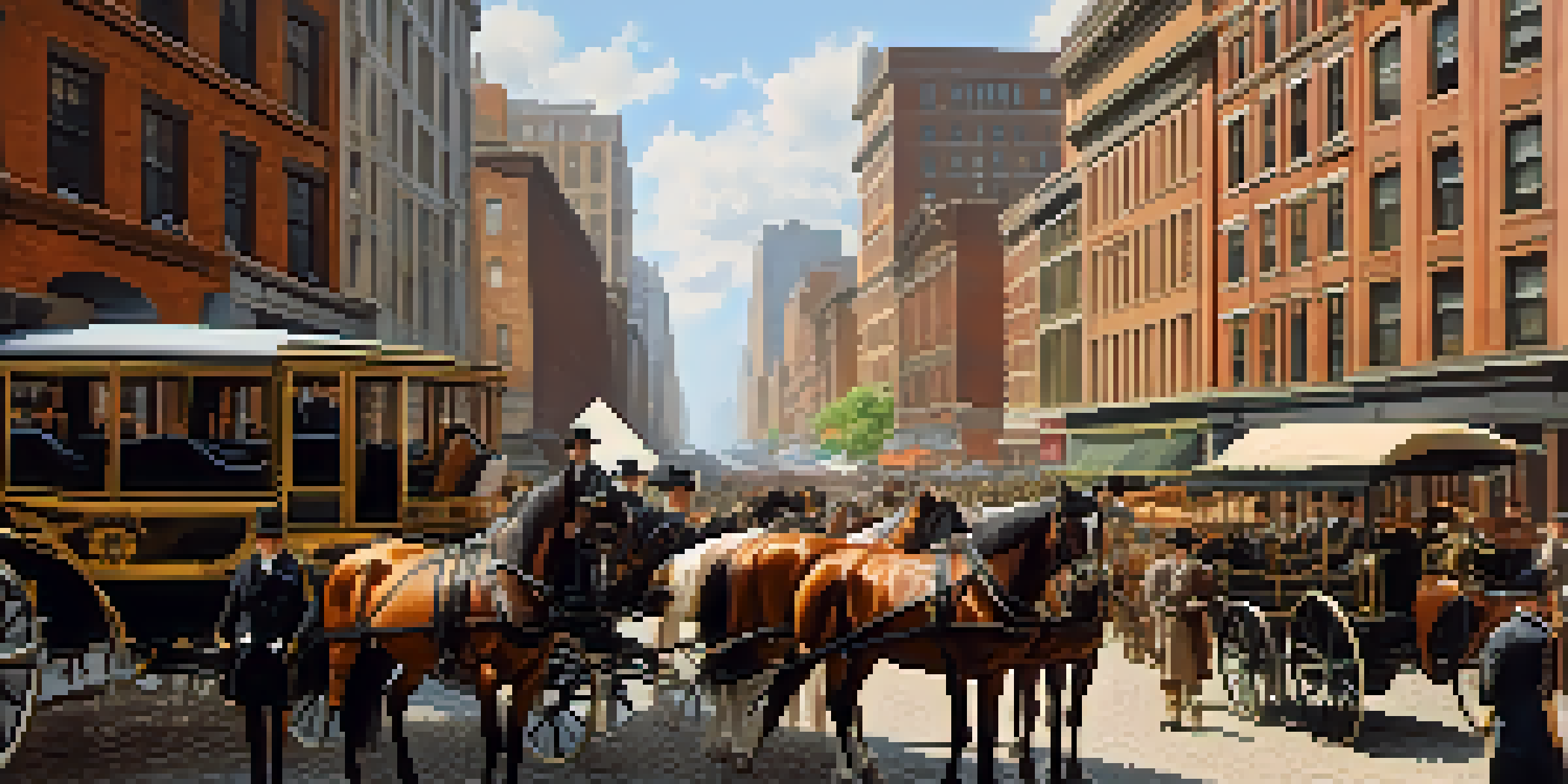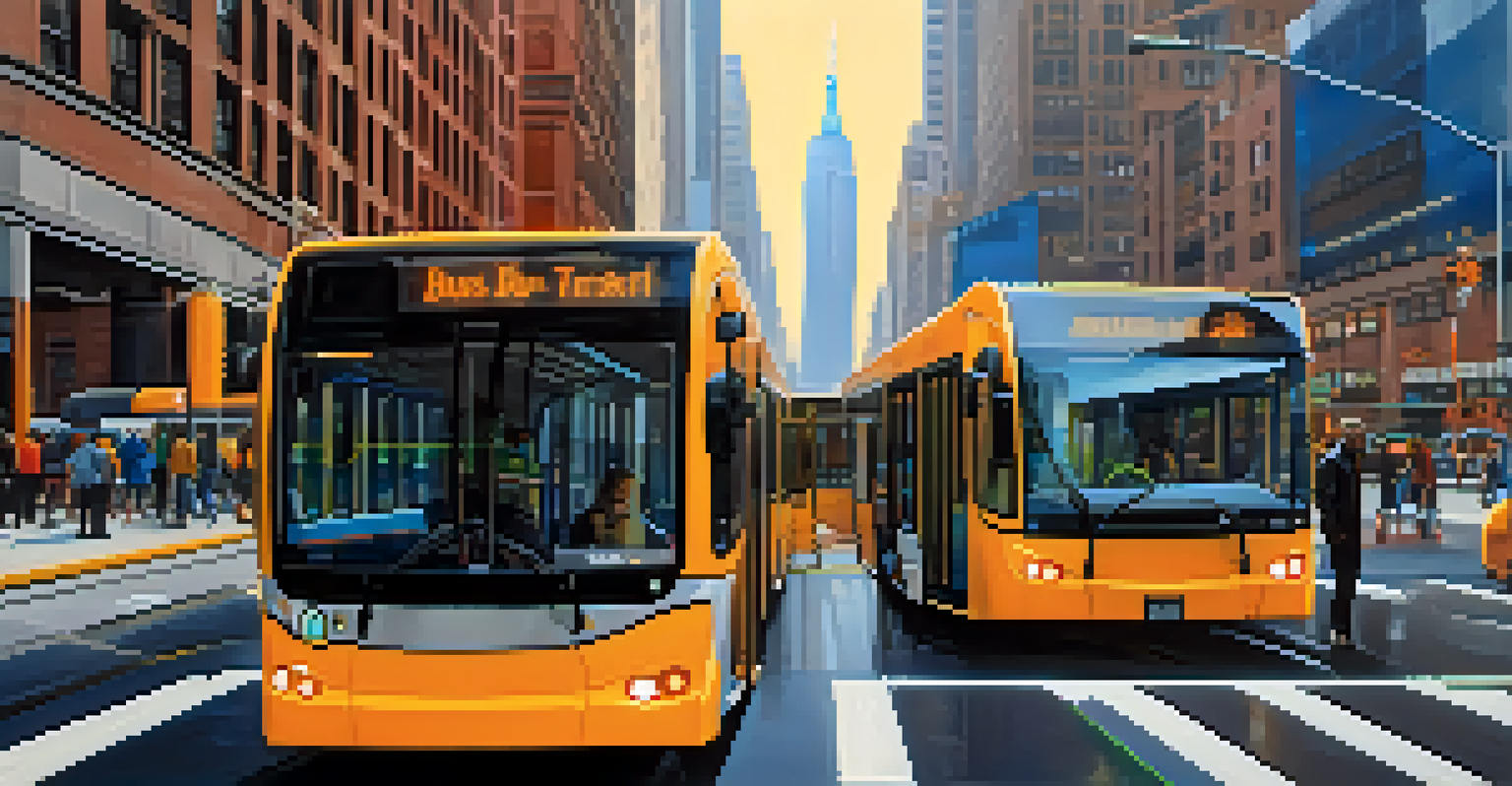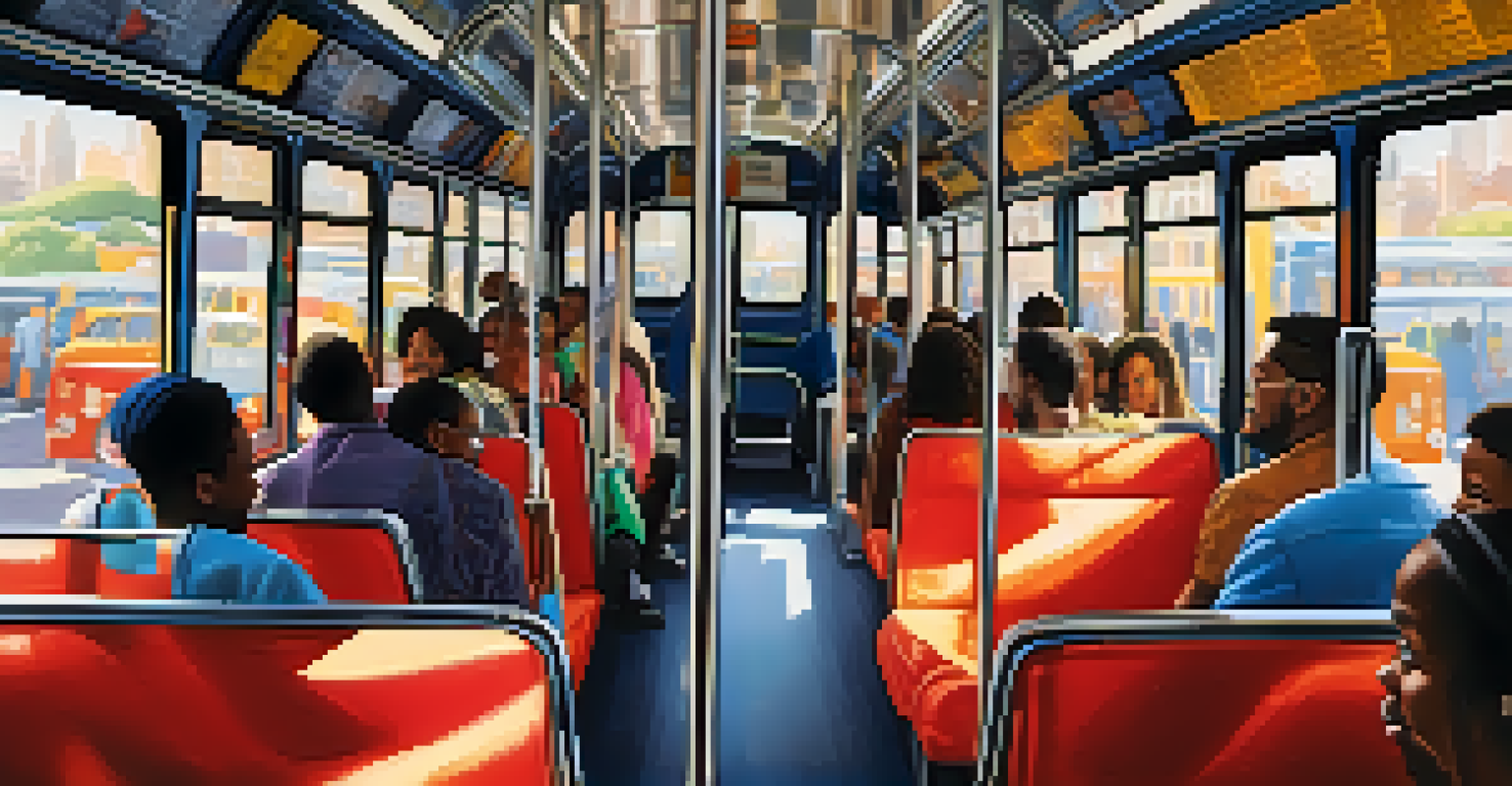History of New York City’s Bus System and Its Innovations

The Birth of New York City's Bus System in the 19th Century
New York City's bus system began in the 19th century, with horse-drawn omnibuses hitting the streets in 1829. These early buses provided a much-needed service for residents, connecting neighborhoods and easing the reliance on horse-drawn carriages. As the city grew, so did the demand for more efficient transportation options.
Public transportation is a lifeline for many; it connects people to jobs, school, and the community.
By the late 1800s, the introduction of electric streetcars marked a significant shift in urban transport. However, buses remained a popular choice due to their flexibility and ability to navigate the city's narrow streets. The evolution of the bus system reflected the changing needs and dynamics of a rapidly expanding metropolis.
In 1905, the first gasoline-powered bus made its debut, paving the way for a more modern transportation alternative. This innovation not only increased the speed of travel but also allowed for larger passenger capacities, making it an appealing option for the bustling city.
Expansion and Integration of Bus Services in the Early 20th Century
As the 20th century progressed, New York City's bus system began to expand significantly. The consolidation of several private bus companies into the newly formed Board of Transportation in 1930 allowed for better coordination and service integration. This merger aimed to create a more cohesive public transit network.

During this time, the city also saw the introduction of the first bus routes that connected with subway lines, enhancing the overall efficiency of public transport. The goal was to ensure that commuters had seamless options for getting around the city, whether by bus or train.
NYC's Bus System Origins
New York City's bus system began in the 19th century with horse-drawn omnibuses, evolving to meet the transportation needs of a growing metropolis.
The expansion continued through the Great Depression, with the city investing in new bus lines to provide jobs and support the economy. By the end of the 1930s, the bus system had become a vital part of New York City's public transportation infrastructure, serving millions each year.
Innovations in Bus Design and Technology During the Mid-20th Century
The mid-20th century brought significant innovations to bus design and technology, enhancing both functionality and passenger experience. This era saw the introduction of the first articulated buses, which featured a flexible joint, allowing them to navigate tight turns while accommodating more passengers. These buses were perfect for busy routes with high ridership.
The bus is the most accessible and equitable form of public transit, serving everyone from the working class to the affluent.
Additionally, the use of automatic doors and air conditioning became more common during this time, providing a more comfortable ride for passengers. The mid-century modernization of the fleet marked a shift toward more user-friendly public transport solutions.
By the 1970s, the introduction of electronic fare systems streamlined the boarding process, reducing wait times and improving overall efficiency. These technological advancements laid the groundwork for the modern bus system we know today.
The Impact of the 1970s Fiscal Crisis on NYC's Bus System
The fiscal crisis of the 1970s had a profound impact on New York City's bus system, leading to service cuts and reduced funding for maintenance. Many routes were eliminated, and the aging fleet struggled to meet the needs of the city’s commuters. This period was challenging for public transport as it faced growing competition from cars and taxis.
In response to these challenges, community advocacy groups emerged to fight for better bus services. These grassroots movements emphasized the importance of public transport and its role in connecting communities. Their efforts highlighted the necessity for a more reliable and efficient bus system.
Impact of the 1970s Crisis
The fiscal crisis of the 1970s led to significant service cuts and highlighted the need for community advocacy for better public transport.
Despite the difficulties, this crisis eventually led to reforms and a renewed focus on public transportation infrastructure. The city recognized the need to invest in its bus system to ensure that it could support the growing population and adapt to changing urban dynamics.
The Introduction of Bus Rapid Transit: A Game Changer
In the early 2000s, New York City introduced the Bus Rapid Transit (BRT) system, aiming to provide a faster and more reliable bus service. Inspired by successful models in cities like Bogotá and Los Angeles, BRT features dedicated bus lanes, efficient boarding processes, and real-time tracking. This innovation transformed the commuting experience for many New Yorkers.
The first BRT line, the Select Bus Service, launched in 2008, was designed to reduce travel times and increase ridership. It integrated features such as off-board fare payment and increased service frequency, making buses a more attractive option for commuters.
As of today, several BRT routes exist across the city, significantly improving transit times and enhancing the overall efficiency of the bus system. This modern approach to urban transport continues to evolve, highlighting New York City's commitment to innovation and improvement.
Sustainability Efforts and the Future of NYC's Bus System
Sustainability has become a paramount focus for New York City's bus system as it looks to the future. The city is actively investing in electric and hybrid buses, aiming to reduce greenhouse gas emissions and provide cleaner air for its residents. This shift aligns with broader environmental goals and the push for greener public transport solutions.
In addition to upgrading the fleet, the city is also exploring the implementation of smart technology, such as GPS tracking and mobile apps, to enhance the passenger experience. These innovations not only improve reliability but also empower commuters with real-time information about bus arrivals and delays.
Focus on Sustainability and Tech
NYC's bus system is now prioritizing sustainability with electric buses and smart technology to enhance the passenger experience.
The ongoing commitment to sustainability and technology indicates a promising future for NYC's bus system. As the city continues to adapt to changing urban landscapes and environmental challenges, it remains dedicated to providing efficient, reliable, and eco-friendly transportation options.
The Cultural Significance of NYC's Bus System
New York City's bus system is not just a mode of transportation; it's a significant part of the city's cultural fabric. Buses provide a vital connection for diverse communities, allowing residents from all walks of life to access employment, education, and entertainment across the city. This accessibility fosters a sense of unity and belonging.
Moreover, the bus system often serves as a melting pot of cultures, where people from different backgrounds share their stories and experiences during their daily commutes. The vibrant atmosphere on buses mirrors the city's dynamic spirit, making public transport a unique aspect of urban life.

As cities worldwide look to improve their public transportation systems, NYC's bus system stands as a testament to resilience and innovation. Its ability to evolve while remaining an essential service for millions showcases the importance of public transport in urban environments.